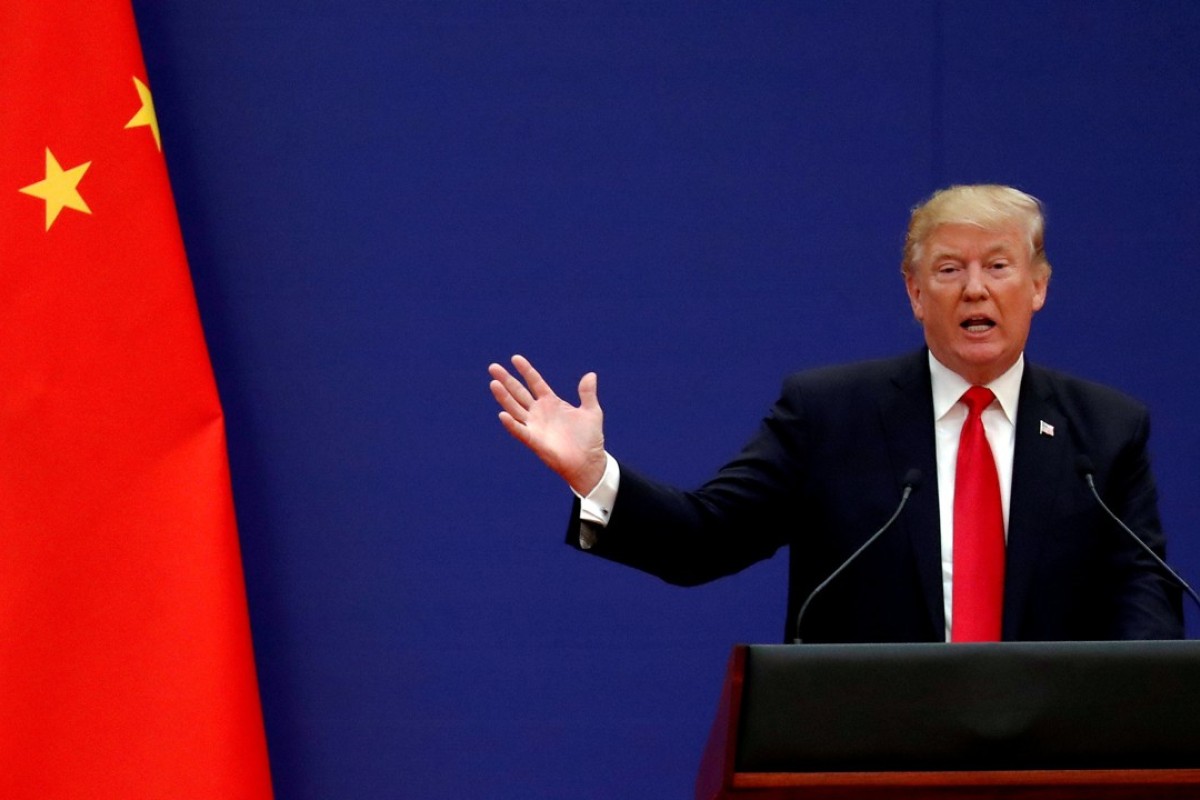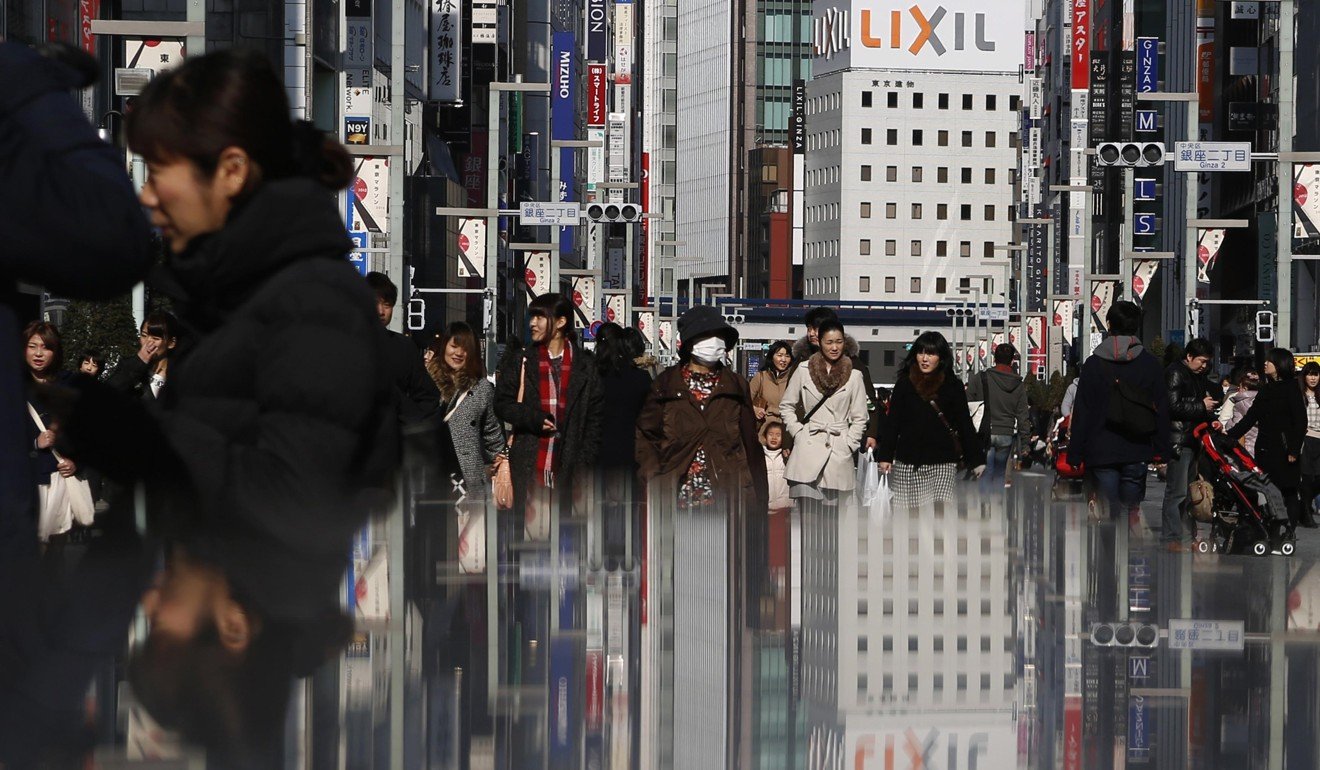BY CRYSTAL TAI
 US President Donald Trump doesn’t have the most consistent political views – but when it comes to trading with Japan, his protectionist outlook has remained virtually the same for decades. During the 1980s, Japan’s staggering rise into a potential economic superpower, threat and successor to US global hegemony greatly irked the man who would go on to become the 45th American president. Appearing on The Morton Downey Jr Show in 1989, Trump said of Japan, America’s largest overseas trading partner at the time: “They have systematically sucked the blood out of America. They have got away with murder … We have to tax the hell out of them.”
US President Donald Trump doesn’t have the most consistent political views – but when it comes to trading with Japan, his protectionist outlook has remained virtually the same for decades. During the 1980s, Japan’s staggering rise into a potential economic superpower, threat and successor to US global hegemony greatly irked the man who would go on to become the 45th American president. Appearing on The Morton Downey Jr Show in 1989, Trump said of Japan, America’s largest overseas trading partner at the time: “They have systematically sucked the blood out of America. They have got away with murder … We have to tax the hell out of them.”
For years, America had found Japan’s protectionist import strategies vexing. Since the late 1970s, the administration of Jimmy Carter had been looking for ways to open up the Japanese market, and when Ronald Reagan took over in 1981, he sought to do the same and lower America’s trade deficit with it.
Japan back then exported automobiles, auto parts, office machinery and other electronics to the US. Cars comprised the majority of goods – by 1981, 1.8 million Japanese-made cars were sold in the US, while only 4,201 US cars were sold in Japan that same year, according to a 1982 Washington Post report.
 US President Ronald Reagan and First Lady Nancy with Japan’s Emperor Hirohito in Tokyo, 1983. Photo: AP
US President Ronald Reagan and First Lady Nancy with Japan’s Emperor Hirohito in Tokyo, 1983. Photo: AP
That year, with the US economy mired in recession, one of the new president’s first trade tactics as part of “Reaganomics” was to limit the number of Japanese car imports. But by 1983, American trade deficits with Japan totalled US$36.8 billion, up from about US$15 billion the year before.
The period saw the return of “Japan-bashing” that had reached its peak during the second world war.
Kristin Vekasi, a political economist specialising in Northeast Asia, described it as a time of negative sentiment towards the country, with calls of “boycott Japan”.
“Japan-bashing was about saying bad things and calling Japan nasty names. But there was also literal Japan-bashing – people taking hammers and smashing Japanese cars on the streets,” the University of Maine academic said.
In 1985, threatened with more widespread tariffs, Japan acquiesced to its main trade partner and security ally’s demands; in the Plaza Accord signed in September, the US, Japan, France, West Germany and Britain agreed to jointly intervene in the foreign exchange markets to depreciate the US dollar against the yen as well as against the German mark.
Japan also imposed voluntary export restrictions on its own industries, including cars and semiconductors, leading it to look to other regions of Asia to diversify its trade and supply chain.
“First, Japan exported elsewhere, but they also built factories in nations like Thailand and China,” said Yves Tiberghien, an Asia economy expert and director emeritus of the Institute of Asian Research at the University of British Columbia.
Over the next decades, Japanese exports to East Asian countries rose from 32.7 per cent in 1990 to 56.9 per cent in 2011.
Meanwhile, the first wave of its outsourcing – mostly consisting of “low-tech” processes – moved to regions including Hong Kong, Singapore, South Korea and Taiwan where costs were lower, while higher tech manufacturing remained in Japan, according to a 2013 report by the Reserve Bank of Australia.
Vekasi said Japanese car manufacturers also ended up moving their operations to the US, which helped the economy.
 Pedestrians in Tokyo's Ginza shopping district. The country’s economy has never fully recovered from its bruising encounter with a US trade war. Photo: Reuters
Pedestrians in Tokyo's Ginza shopping district. The country’s economy has never fully recovered from its bruising encounter with a US trade war. Photo: Reuters
But ultimately, the stronger yen, and Japan’s move to lower interest rates to stimulate domestic consumption ended up fuelling asset prices, leading to a bubble economy. A spectacular crash followed, stalling its economy for more than 10 years.
These “lost decades” have come to mind, as Trump uses his past rhetoric in his present approach to China – America’s largest trading partners in terms of total goods. Among other things, he has claimed that the American economy is being “raped” by a “rival power”.
Tiberghien said the way China was being singled out paralleled the experience of Japan: “Initially, Japan was a quarter of the US economy and by 1995 it reached 70 per cent of US GDP, that was the peak … Today, it is more like just above 30 per cent.”
When a country’s GDP rises to two thirds of the US economy, it becomes a threat, said Tiberghien. “Essentially, the battle between the US and Japan is being expanded and taken across the board,” he said. “Trump is taking on Europe, Canada, India, and of course they’re going to take on China.”
Trump is advised by Robert Lighthizer, a trade representative who also served under Reagan. The Japanese remember him as being tough to deal with, Tiberghien said.
“Japanese trade officials from the ’80s still remember their encounters with him as a very bad experience, he is pretty pugnacious and not known for win-win.
“Both Trump and Lighthizer are fighting an old war,” Tiberghien continued.
“Of course now, Donald Trump has taken it to a bigger level. But there’s something more toxic about this round. The current approach by the US is actually one that abuses, bullies and threatens, [which affects] trust and confidence … it could affect the global trading system, it may not even help the US in the end.”
The US continues to place pressure on Japan. In late September, it finally agreed to start new talks aimed at narrowing its trade gap with the US – it had a US$69 billion surplus last year.
Tiberghien said former trade advisers had told him: “If we were to advise [Prime Minister Shinzo] Abe we would say – delay, delay, delay. With bilateral negotiations you always end up in some of the same battles.”
While Japan probably faces more concessions ahead of its bilateral negotiations with the US, it is also seeing warming ties with China, as Abe heads to Beijing to meet President Xi Jinping next week, a month after meeting with Trump.
Adam Broinowski, a postdoctoral fellow at the Australian National University’s College of Asia and the Pacific, said successful talks could lead to joint Chinese-Japanese infrastructure projects.
While the two nations have no bilateral agreement, Japan-China economic interdependence is inevitable, he said, and Trump’s tough talk towards both has accelerated this process.
No comments:
Post a Comment